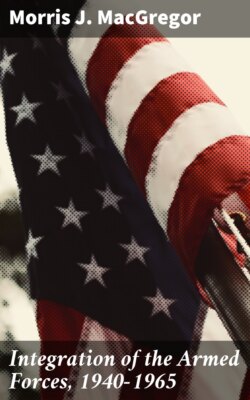Читать книгу Integration of the Armed Forces, 1940-1965 - Morris J. MacGregor - Страница 35
На сайте Литреса книга снята с продажи.
A Postwar Search
ОглавлениеThe nation's military leaders and the leaders of the civil rights movement were in rare accord at the end of World War II. They agreed that despite considerable wartime improvement the racial policies of the services had proved inadequate for the development of the full military potential of the country's largest minority as well as the efficient operation and management of the nation's armed forces. Dissatisfaction with the current policy of the armed forces was a spearpoint of the increasingly militant and powerful civil rights movement, and this dissatisfaction was echoed to a great extent by the services themselves. Intimate association with minority problems had convinced the Army's Advisory Committee on Negro Troop Policies and the Navy's Special Programs Unit that new policies had to be devised and new directions sought. Confronted with the incessant demands of the civil rights advocates and presented by their own staffs with evidence of trouble, civilian leaders of the services agreed to review the status of the Negro. As the postwar era opened, both the Army and the Navy were beginning the interminable investigations that augured a change in policy.
Unfortunately, the services and the civil rights leaders had somewhat different ends in mind. Concerned chiefly with military efficiency but also accustomed to racial segregation or exclusion, most military leaders insisted on a rigid appraisal of the performance of segregated units in the war and ignored the effects of segregation on that performance. Civil rights advocates, on the other hand, seeing an opportunity to use the military as a vehicle for the extension of social justice, stressed the baneful effects of segregation on the black serviceman's morale. They were inclined to ignore the performance of the large segregated units and took issue with the premise that desegregation of the armed forces in advance of the rest of American society would threaten the efficient execution of the services' military mission. Neither group seemed able to appreciate the other's real concerns, and their contradictory conclusions promised a renewal of the discord in their wartime relationship.
